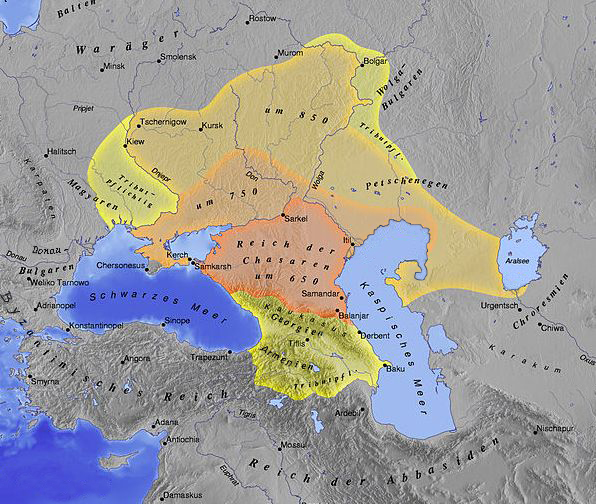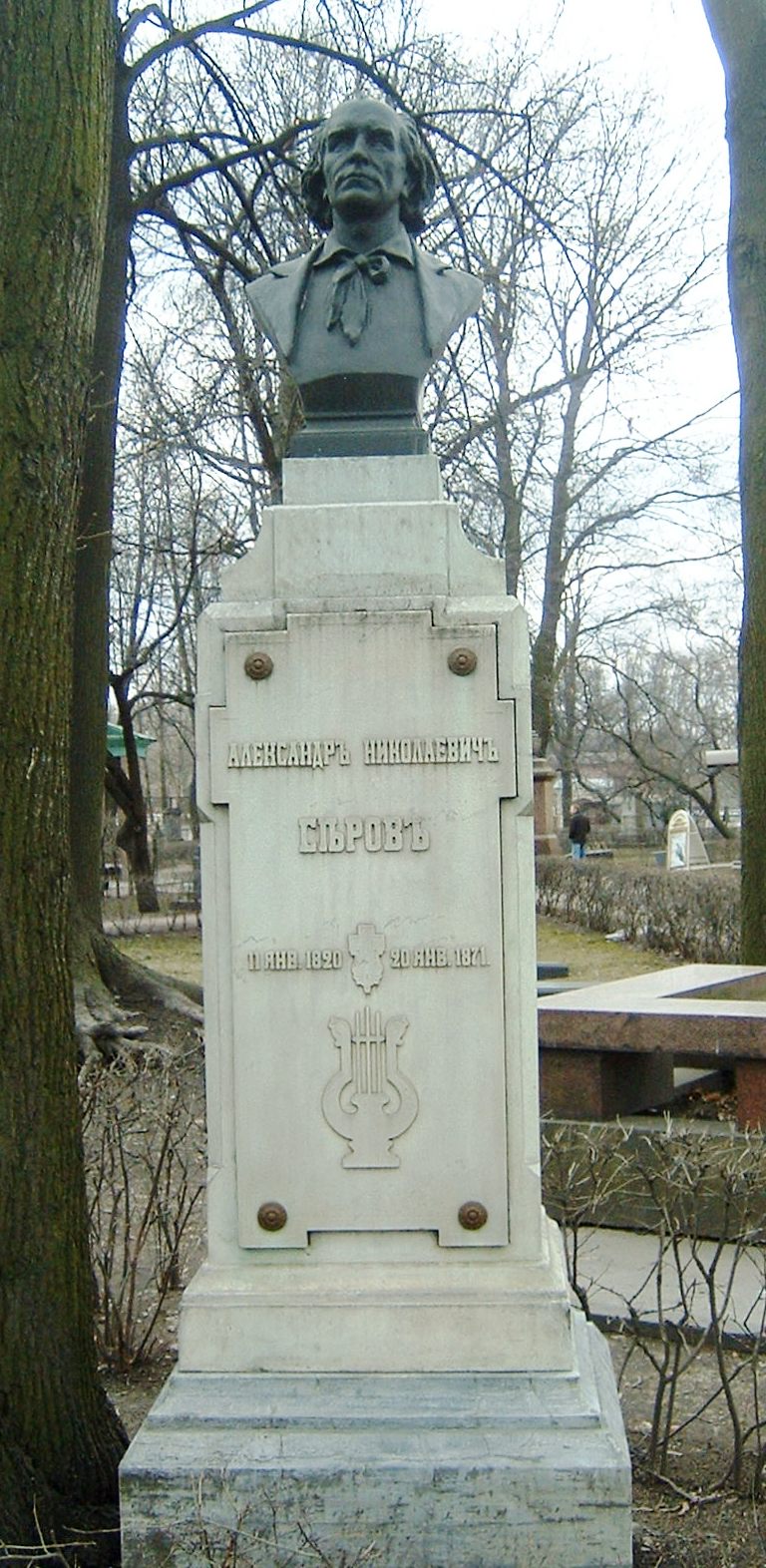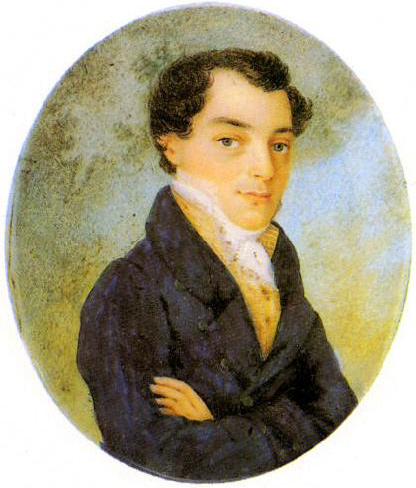|
Rogneda Of Polotsk
Rogneda of Polotsk (962–1002) is the Slavic name for Ragnheiðr, a Princess consort of Rus'. She was the daughter of Ragnvald (Slavic: Rogvolod) who came from Scandinavia and established himself at Polotsk in the mid-10th century. Life It has been speculated that Rogneda belonged to the Ynglings royal family of present day Sweden. According to the Novgorod Fourth Chronicle, in or about 980, Vladimir the Great, on learning that she was betrothed to his half-brother Yaropolk I of Kiev, took Polotsk and forced Rogneda to marry him. Having raped Rogneda in the presence of her parents, he ordered them to be killed, along with two of Rogneda's brothers. Rogneda gave him several children. The four sons were Yaroslav the Wise (though some accounts suggest he may have been the son of Anna Porphyrogenita), Vsevolod, Mstislav of Chernigov, and Izyaslav of Polotsk. She also bore two daughters, one of whom is named by Nestor the Chronicler as Predslava (taken as a concubine of Bole ... [...More Info...] [...Related Items...] OR: [Wikipedia] [Google] [Baidu] |
Vladimir Svyatoslavich
Vladimir I Sviatoslavich or Volodymyr I Sviatoslavych ( orv, Володимѣръ Свѧтославичь, ''Volodiměrъ Svętoslavičь'';, ''Uladzimir'', russian: Владимир, ''Vladimir'', uk, Володимир, ''Volodymyr''. See Vladimir (name) for details., ''Vladimir Svyatoslavich''; uk, Володимир Святославич, ''Volodymyr Sviatoslavych''; Old Norse ''Valdamarr gamli''; c. 95815 July 1015), also known as Vladimir the Great or Volodymyr the Great, was Prince of Novgorod, Grand Prince of Kiev, and ruler of Kievan Rus' from 980 to 1015. Vladimir's father was Prince Sviatoslav I of Kiev of the Rurikid dynasty. After the death of his father in 972, Vladimir, who was then prince of Novgorod, was forced to flee to Scandinavia in 976 after his brother Yaropolk murdered his other brother Oleg of Drelinia, becoming the sole ruler of Rus'. In Sweden, with the help of his relative Ladejarl Håkon Sigurdsson, ruler of Norway, he assembled a Varangian ... [...More Info...] [...Related Items...] OR: [Wikipedia] [Google] [Baidu] |
Chernigov
Chernihiv ( uk, Черні́гів, , russian: Черни́гов, ; pl, Czernihów, ; la, Czernihovia), is a List of cities in Ukraine, city and List of hromadas of Ukraine, municipality in northern Ukraine, which serves as the administrative center of Chernihiv Oblast and Chernihiv Raion within the oblast. Chernihiv's population is The city was designated as a Hero City of Ukraine, Hero City during the 2022 Russian invasion of Ukraine, 2022 Russian Invasion of Ukraine. Geography Chernihiv stands on the Desna River to the north-north-east of Kyiv. The area was served by Chernihiv Shestovitsa Airport, Chernihiv Shestovytsia Airport prior to 2002, and during the Cold War it was the site of Chernihiv (air base), Chernihiv air base. History Etymology The name "Chernihiv" is a compound name, which begins with the root 'Cherni/Cherno,' which means "black" in Slavic. Scholars vary with interpretations of the second part of the name ("hiv"/gov", "говъ") though scholars suc ... [...More Info...] [...Related Items...] OR: [Wikipedia] [Google] [Baidu] |
Tmutarakan
Tmutarakan ( rus, Тмутарака́нь, p=tmʊtərɐˈkanʲ, ; uk, Тмуторокань, Tmutorokan) was a medieval Kievan Rus' principality and trading town that controlled the Cimmerian Bosporus, the passage from the Black Sea to the Sea of Azov, between the late 10th and 11th centuries. Its site was the ancient Greek colony of Hermonassa ( grc, Ἑρμώνασσα) founded in the mid 6th century BCE, by Mytilene (Lesbos), situated on the Taman peninsula, in the present-day Krasnodar Krai of Russia, roughly opposite Kerch. The Khazar fortress of Tamantarkhan (from which the Byzantine name for the city, Tamatarcha, is derived) was built on the site in the 7th century, and became known as Tmutarakan when it came under Kievan Rus control. History The Greek colony of Hermonassa was located a few miles west of Phanagoria and Panticapaeum, major trade centers for what was to become the Bosporan Kingdom. The city was founded in the mid-6th century BCE by Mytilene (Lesbos), al ... [...More Info...] [...Related Items...] OR: [Wikipedia] [Google] [Baidu] |
Tale Of Bygone Years
The ''Tale of Bygone Years'' ( orv, Повѣсть времѧньныхъ лѣтъ, translit=Pověstĭ vremęnĭnyxŭ lětŭ; ; ; ; ), often known in English as the ''Rus' Primary Chronicle'', the ''Russian Primary Chronicle'', or simply the ''Primary Chronicle'', as well as also, after the author it has traditionally been ascribed to, '' Nestor's Chronicle'', is an Old East Slavic chronicle (letopis) of Kievan Rus' from about 850 to 1110, originally compiled in Kiev around 1113. The work’s name originates from the opening sentence of the text, which reads: “These are the narratives of bygone years regarding the origin of the land of Rus’ (Old East Slavic: Рѹсь), the first princes of Kyiv, and from what source the land of Rus’ had its beginning.” The work has long been considered to be a fundamental source in the interpretation of the history of the East Slavs. The ''Chronicle's'' content is known today from several surviving editions and codices that have been ... [...More Info...] [...Related Items...] OR: [Wikipedia] [Google] [Baidu] |
Boris And Gleb
Boris and Gleb ( orv, Борисъ и Глѣбъ, ''Borisŭ i Glěbŭ''; russian: Борис и Глеб, ''Boris i Gleb''; ua, Борис і Гліб, ''Borys i Hlib''), Christian names Roman and David, respectively ( orv, Романъ, Давꙑдъ, ''Romanŭ, Davydŭ''), were the first saints canonized in Kievan Rus' after the Christianization of the country. Their feast day is observed on July 24 (August 6). History According to the two 11th-century ''Lives of Boris and Gleb'' (ascribed to Nestor the Chronicler and Jacob the Monk), they were younger children of Vladimir the Great, who favored them over his other children. The ''Primary Chronicle'' claims that their mother was a Bulgarian woman. Most modern scholars, however, argue that Boris and Gleb had different mothers and were of different ages. Boris, the elder, who was already married and ruled the town of Rostov, was probably regarded as heir apparent to the Kievan throne. Gleb, who was still a minor, ruled the ea ... [...More Info...] [...Related Items...] OR: [Wikipedia] [Google] [Baidu] |
Rostov
Rostov ( rus, Росто́в, p=rɐˈstof) is a town in Yaroslavl Oblast, Russia, one of the oldest in the country and a tourist center of the Golden Ring. It is located on the shores of Lake Nero, northeast of Moscow. Population: While the official name of the town is Rostov, it is popularly known to Russians as Rostov Veliky ( rus, Ростов Великий, ''Rostov the Great'') to distinguish it from the much larger city of Rostov-on-Don. The name of the town railway station is Rostov Yaroslavsky, due to its location in Yaroslavl Oblast. History Rostov was preceded by Sarskoye Gorodishche, which some scholars interpret as the capital of the Finnic Merya tribe. Others believe it was an important Viking trade enclave and fortress guarding the Volga trade route. It is known from Norse sources as Raðstofa. Scythians also settled there. These different ethnicities, such as the Vikings, Scyths, Slavs and Finns, were likely the ancestors of many of today's people in that ... [...More Info...] [...Related Items...] OR: [Wikipedia] [Google] [Baidu] |
Alexander Serov
Alexander Nikolayevich Serov (russian: Алекса́ндр Никола́евич Серо́в, Saint Petersburg, – Saint Petersburg, ) was a Russian composer and music critic. He is notable as one of the most important music critics in Russia during the 1850s and 1860s and as the most significant Russian composer in the period between Dargomyzhsky's ''Rusalka'' and the works of Rimsky-Korsakov, Mussorgsky, and Tchaikovsky. Alexander Serov was the father of Russian artist Valentin Serov. Biography Alexander Serov was born in St. Petersburg on 11 January 1820, the son of Nikolai Ivanovich Serov, a Finance Ministry official. Serov's maternal grandfather, Carl Ludwig Hablitz, was a naturalist of German-Jewish origin who was born in Königsberg and moved to Russia in childhood when his father was hired to be inspector of Moscow University's printing department. In Russia, Hablitz became a member of the Russian Academy of Sciences among other high official posts. Serov's f ... [...More Info...] [...Related Items...] OR: [Wikipedia] [Google] [Baidu] |
Rogneda (opera)
''Rogneda'' (russian: Рогнеда) is an opera in five acts, composed by Alexander Serov between 1863 and 1865. The scenario, by the composer, was based on the novel '' Askold's Grave'' (''Аскольдова могила'', 1833) by Mikhail Zagoskin and the poem ''Rogneda'' (ca. 1825) by Kondraty Ryleyev. The actual Russian libretto was created by Dmitry Averkiev in the same manner as with the composer's previous opera, '' Judith'', with the words written to fit the vocal lines ''after'' the music had been composed. This opera forms a sequel of sorts to Alexey Verstovsky's highly successful singspiel, ''Askold's Grave'', which premiered in 1835, just the year before Glinka's ''A Life for the Tsar'' reached the stage. No less a patriotic opera than those two, ''Rogneda'' in its plot combines elements of the life of the title character with the Christianization of Russia, dated in 988 with the conversion of Vladimir I of Kiev. With its huge cast and sprawling plot, the opera ... [...More Info...] [...Related Items...] OR: [Wikipedia] [Google] [Baidu] |
Kondraty Fyodorovich Ryleyev
Kondraty Fyodorovich Ryleyev, also spelled Kondraty Feodorovich Ryleev (, September 29 (September 18 O.S.), 1795 – July 25 (July 13 O.S.), 1826) was a Russian poet, publisher, and a leader of the Decembrist Revolt, which attempted to overthrow the Russian monarchy in 1825. Early life Ryleyev was born in the village of Batovo, now part of Gatchinsky District, Leningrad Oblast. His father, Fyodor Ryleyev, was an impoverished nobleman, a small landowner, who was later employed as the manager of one of Prince Golitsyn's estates. In spite of his family's pecuniary difficulties, Ryleyev was able to study at the Corps des Pages, an elite military academy attended only by members of the nobility, in Saint Petersburg. After his graduation, Ryleyev was awarded a commission in the First Cavalry Company of the First Reserve Artillery Brigade. He participated in the foreign campaigns of 1814 and 1815, seeing action in Poland, Germany and France, during the Napoleonic Wars. In 1818, R ... [...More Info...] [...Related Items...] OR: [Wikipedia] [Google] [Baidu] |
Zaslawye
Zaslawye or Zaslaŭje ( be, Засла́ўе, ; russian: Засла́вль; pl, Zasław; lt, Zaslavlis) is a historical town in the Minsk Region of Belarus, 20 kilometres northwest of Minsk. In 2009 its population was 14,400. History According to chronicles, Zaslawye was founded in 985 by Vladimir the Great. He sent his wife Rogneda to live in Zaslawye with their son Izyaslav of Polotsk, the founder of the princely house of Polatsk. The town is mentioned in historical writings as Izyaslavl, which led to the current name, Zaslawye. In the beginning of Middle Ages, the town was a centre of the Principality of Izyaslavl. In the 11th century, the town was heavily fortified. Much of the town's territory has been designated for archaeological preservation now. In the modern days, the town built its outdoor statue of Rogneda and Izyaslav. During the period of Reformation, the town was a nest for followers of Calvinism and Socinianism. The town became a part of the Minsk Governora ... [...More Info...] [...Related Items...] OR: [Wikipedia] [Google] [Baidu] |
Izyaslavl
Zaslawye or Zaslaŭje ( be, Засла́ўе, ; russian: Засла́вль; pl, Zasław; lt, Zaslavlis) is a historical town in the Minsk Region of Belarus, 20 kilometres northwest of Minsk. In 2009 its population was 14,400. History According to chronicles, Zaslawye was founded in 985 by Vladimir the Great. He sent his wife Rogneda to live in Zaslawye with their son Izyaslav of Polotsk, the founder of the princely house of Polatsk. The town is mentioned in historical writings as Izyaslavl, which led to the current name, Zaslawye. In the beginning of Middle Ages, the town was a centre of the Principality of Izyaslavl. In the 11th century, the town was heavily fortified. Much of the town's territory has been designated for archaeological preservation now. In the modern days, the town built its outdoor statue of Rogneda and Izyaslav. During the period of Reformation, the town was a nest for followers of Calvinism and Socinianism. The town became a part of the Minsk Governora ... [...More Info...] [...Related Items...] OR: [Wikipedia] [Google] [Baidu] |

.jpg)





